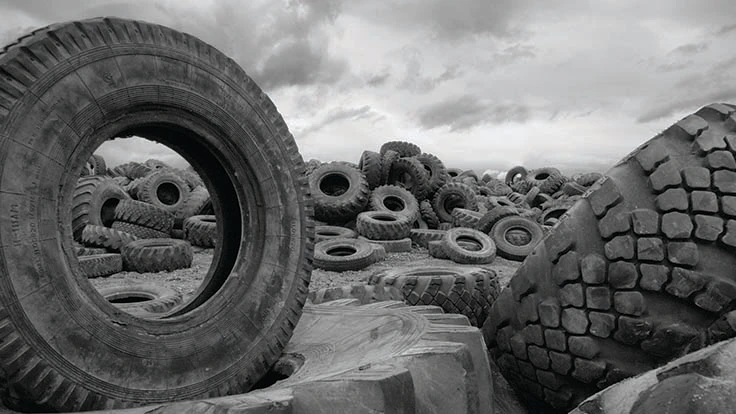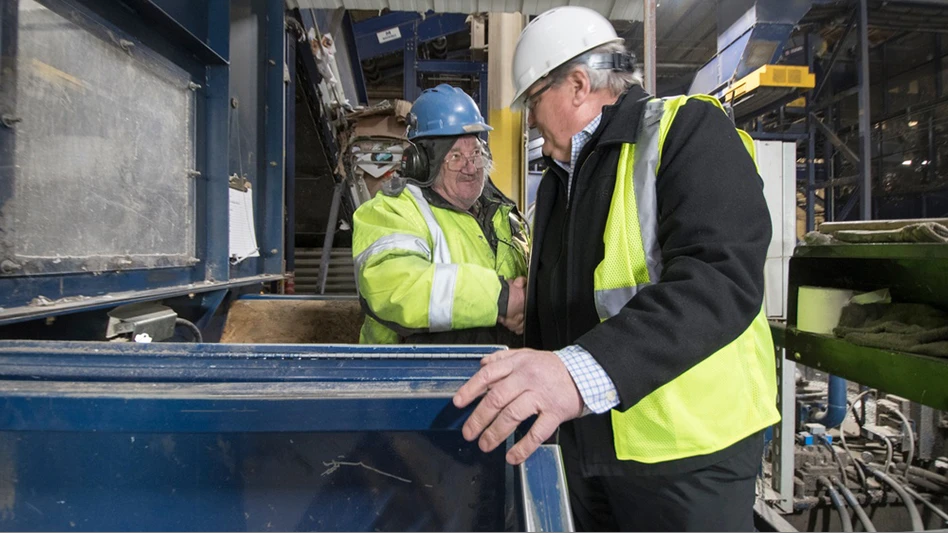
The Rubber Manufacturers Association (RMA), Washington, reports that scrap tire piles in the United States have declined by more than 93 percent in the past two decades.
In addition, RMA says nearly 9 out of 10 scrap tires today are consumed in several end markets annually.
The national trade association for tire manufacturers in the U.S. says of the more than 1 billion stockpiled scrap tires that existed in 1990, about 70 million tires remain to be cleaned up. Approximately 70 percent of the remaining tires are stockpiled in just two states, Colorado (31 million) and Texas (17 million). Seven additional states—Arkansas, Illinois, North Carolina, Ohio, Pennsylvania, Virginia and Washington—account for almost 12 million additional stockpiled tires combined.
RMA says cleaning up piles has taken on a new urgency with the threat of the mosquito-borne Zika virus. Abandoned tires are a fertile mosquito breeding ground due to the ability to collect water, retain heat and offer protection from predators.
“Effective state scrap tire management laws and programs advocated by RMA have produced a remarkable environmental success story,” says Anne Forristall Luke, RMA president and CEO. “Piles have been reduced from more than 1 billion tires in 1990 to fewer than 70 million today. Equally impressive is that nearly 90 percent of annually generated scrap tires are consumed in an end use market.”
The top end use markets for tires include tire-derived fuel, or TDF, (48 percent), ground rubber (26 percent) and civil engineering uses (7 percent). TDF is used primarily by the cement industry and pulp and paper makers as a supplemental fuel due to its high Btu (British thermal unit) content. Ground rubber markets include mulch, rubber modified asphalt, sport surfaces such as athletic tracks and some limited use in new tire manufacturing. Civil engineering uses include tire aggregate as a replacement fill material for light rail vibration dampening, road embankments and other uses.
“More than two decades of successful scrap tire management have produced value-added products that today consume more than 200 million tires annually,” says Luke. “The dramatic reduction in scrap tire piles has reduced the threat of significant environmental harm caused when tire piles catch fire or sit and become mosquito and vermin breeding grounds.”
Luke says that an ongoing challenge is to maintain the achievements in stockpile reduction and market development as states reassess priorities and budgets. States that become complacent after many years of successful scrap tire management and shift funds raised from state tire fees can risk an increase in illegal tire piles and reduced funding for cleanup of abandoned piles, she adds.
“States that have passed laws with dedicated funding need to remain vigilant and protect programs to prevent a resurgence of scrap tire problems,” Luke says. “A great deal has been accomplished through working partnerships between state policymakers, recyclers and the tire manufacturing industry. Our shared goal should be zero stockpiles and a commitment toward a cleaner environment and a vibrant, growing scrap tire market.”
RMA says it is a forceful advocate for effective state scrap tire management programs that include enforcement authority to regulate the transportation and tracking of scrap tires, funding to address cleanup of abandoned scrap tire piles, and support for environmentally and economically sound scrap tire end uses.
In addition, RMA says nearly 9 out of 10 scrap tires today are consumed in several end markets annually.
The national trade association for tire manufacturers in the U.S. says of the more than 1 billion stockpiled scrap tires that existed in 1990, about 70 million tires remain to be cleaned up. Approximately 70 percent of the remaining tires are stockpiled in just two states, Colorado (31 million) and Texas (17 million). Seven additional states—Arkansas, Illinois, North Carolina, Ohio, Pennsylvania, Virginia and Washington—account for almost 12 million additional stockpiled tires combined.
RMA says cleaning up piles has taken on a new urgency with the threat of the mosquito-borne Zika virus. Abandoned tires are a fertile mosquito breeding ground due to the ability to collect water, retain heat and offer protection from predators.
“Effective state scrap tire management laws and programs advocated by RMA have produced a remarkable environmental success story,” says Anne Forristall Luke, RMA president and CEO. “Piles have been reduced from more than 1 billion tires in 1990 to fewer than 70 million today. Equally impressive is that nearly 90 percent of annually generated scrap tires are consumed in an end use market.”
The top end use markets for tires include tire-derived fuel, or TDF, (48 percent), ground rubber (26 percent) and civil engineering uses (7 percent). TDF is used primarily by the cement industry and pulp and paper makers as a supplemental fuel due to its high Btu (British thermal unit) content. Ground rubber markets include mulch, rubber modified asphalt, sport surfaces such as athletic tracks and some limited use in new tire manufacturing. Civil engineering uses include tire aggregate as a replacement fill material for light rail vibration dampening, road embankments and other uses.
“More than two decades of successful scrap tire management have produced value-added products that today consume more than 200 million tires annually,” says Luke. “The dramatic reduction in scrap tire piles has reduced the threat of significant environmental harm caused when tire piles catch fire or sit and become mosquito and vermin breeding grounds.”
Luke says that an ongoing challenge is to maintain the achievements in stockpile reduction and market development as states reassess priorities and budgets. States that become complacent after many years of successful scrap tire management and shift funds raised from state tire fees can risk an increase in illegal tire piles and reduced funding for cleanup of abandoned piles, she adds.
“States that have passed laws with dedicated funding need to remain vigilant and protect programs to prevent a resurgence of scrap tire problems,” Luke says. “A great deal has been accomplished through working partnerships between state policymakers, recyclers and the tire manufacturing industry. Our shared goal should be zero stockpiles and a commitment toward a cleaner environment and a vibrant, growing scrap tire market.”
RMA says it is a forceful advocate for effective state scrap tire management programs that include enforcement authority to regulate the transportation and tracking of scrap tires, funding to address cleanup of abandoned scrap tire piles, and support for environmentally and economically sound scrap tire end uses.
Latest from Waste Today
- Techbros launches AI-integrated electronics processing facility
- Understanding interchange optimization
- Account Updater: Keeping customer credit cards always up-to-date
- Understanding credit card fees
- CDRA names new executive director
- CRI credits DRS modifications for Connecticut container recycling rate boost
- LRS expands into Indianapolis with purchase of GHW
- Pelleting equipment: Transform hard-to-handle waste streams





